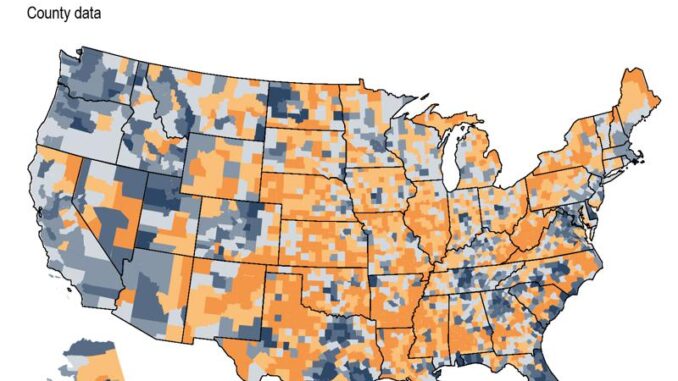
SIOUX FALLS, S.D. (AP) — South Dakota’s cities fueled the state’s population growth over the last decade, according to detailed population data released Thursday by the U.S. Census Bureau that will form the basis for the state’s new legislative boundaries.
The state’s three most populous counties — Minnehaha, Lincoln and Pennington — accounted for most of the population growth. Lincoln County, which contains parts of Sioux Falls and its surrounding communities, saw the fastest growth, increasing by 45% to 65,161 people. The trend means that legislative power will shift towards cities because each legislative district must contain roughly the same number of people.
Lawmakers tasked with drawing new boundaries for legislative districts said they will begin to pour over the data in earnest later this month. Redistricting committees, dominated by Republicans, will meet on Aug. 30.
“This data really is the foundation we will work from,” said Republican Sen. Mary Duvall, the chair of the Senate Redistricting Committee.
Legislative redistricting happens every 10 years after a federal census. Lawmakers are aiming to come up with legislative districts that represent 25,333 people, with some wiggle room allowed. They are also supposed to follow current county and municipal boundaries as much as possible.
Lawmakers are working on a tighter timeline than in previous years because the pandemic delayed the Census Bureau’s report. Lawmakers are planning to have draft boundaries drawn up by October, when they will hold a series of public hearings across the state. State law gives them a Dec. 1 deadline to approve the new districts.
“Normally this data is evaluated and compiled through multiple months,” said Republican House Speaker Spencer Gosch, who is also the chair for the House Redistricting Committee. “It’s going to be fast.”
Republicans hold large majorities on both House and Senate Redistricting Committees, with Democrats grasping on to a single seat on either committee. Democrats hold about 10% of legislative seats, so proportionately, the redistricting committee is in line with the Legislature’s makeup.
Democrat Rep. Ryan Cwach, the lone Democrat on the House committee, said he was hoping the boundary lines end up “fair” without any gerrymandering, a process by which voters are either divided or combined to make it more likely for one party to win future elections.
Lawmakers have indicated the most challenging areas will be cities and Native American reservations. Federal law requires the state to ensure racial minority groups receive adequate representation in state government. More than half of the population growth in Sioux Falls, the state’s largest city, came from minority groups. The city’s Black, Asian and Hispanic populations have nearly doubled in the last decade.
Several counties in the Black Hills on the western side of the state saw jumps in population as well. Meade and Pennington Counties reported a combined increase of 13,642 people.
“Ultimately, there will have to be more districts in those areas,” said Republican Sen. Jim Bolin, vice-chair of the redistricting committee. “The rural areas will have less representation.”
